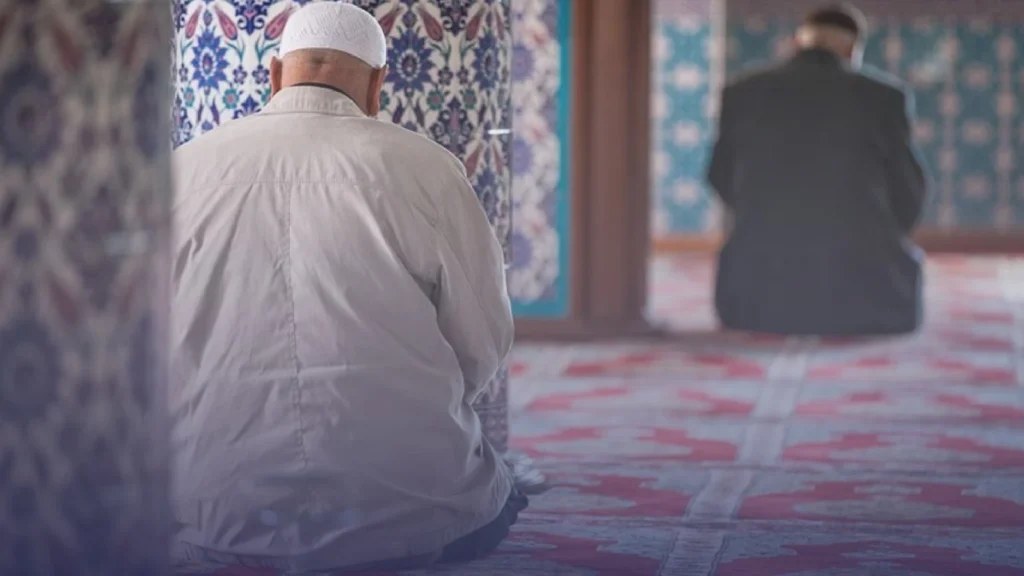Combining Maghrib and Isha in UK Summer 2025: Sign Returns, Hardship Persists

The astronomical sign marking the start of Isha prayer is making its gradual return to British skies after several weeks of absence. In recent days, the red twilight — used in the Muslim World League (MWL) calculation to determine Isha, when the sun dips 17° below the horizon — has become visible again in many cities.
Each summer, particularly in the north of the country, twilight lingers long after sunset. In some locations, it never fully disappears, meaning the sun does not descend far enough for the sign of Isha to appear. In such circumstances, mosques and Islamic centres across Britain rely on the established legal concession to combine Maghrib and Isha, as endorsed by respected scholars. Others adopt estimated timings, such as one-third or half of the night, or fixed intervals — commonly 90 minutes after Maghrib.
While the reappearance of the Isha sign from early August 2025 restores the astronomical separation between the two prayers, it does not necessarily remove the concession to combine them. In many cities, Isha still begins well after 10pm, and in some northern areas after midnight — conditions that continue to justify combining the prayers.
Isha timings across the UK in 2025

Astronomical data shows when the Isha sign reappears in major cities and when the prayer time first falls to 10pm or earlier — the International Astronomy Centre’s benchmark for hardship — alongside a more flexible 10:45pm threshold used by some UK scholars for cities with later night routines.
| City | Sign Returns (Red Twilight Disappears) | Isha ≤ 10:00 pm* | Isha ≤ 10:45 pm** |
| Glasgow | 6 Aug | 22 Aug | 6 Aug |
| Edinburgh | 5 Aug | 20 Aug | 5 Aug |
| Newcastle | 2 Aug | 25 Aug | 7 Aug |
| Belfast | 1 Aug | 29 Aug | 11 Aug |
| Leeds | 26 Jul | 17 Aug | 13 Jul |
| Bradford | 26 Jul | 27 Aug | 14 Aug |
| Manchester | 27 Jul | 28 Aug | 27 Jul |
| Sheffield | 27 Jul | 6 Aug | 27 Jul |
| Liverpool | 27 Jul | 18 Aug | 27 Jul |
| Birmingham | 25 Jul | 4 Aug | 25 Jul |
| Nottingham | 25 Jul | 3 Sept | 31 Jul |
| Leicester | 24 Jul | 9 Aug | 24 Jul |
| Cardiff | 23 Jul | 15 Aug | 23 Jul |
| London | 22 Jul | 30 Jul | 22 Jul |
| Oxford | 22 Jul | 17 Aug | 14 Aug |
| Brighton | 21 Jul | 29 Jul | 21 Jul |
| Bournemouth | 19 Jul | 16 Aug | 19 Jul |
* First night when Isha is 9:59pm or earlier, considered the hardship threshold by the International Astronomy Centre.
** First night when Isha is 10:44pm or earlier, reflecting a more flexible cut-off applied by some UK scholars.
Where the 10:45pm threshold coincides with the reappearance of the sign, it indicates the prayer had already fallen within that time before the sign became visible — signalling the hardship had effectively eased in timing terms, even if not astronomically.

Local mosques remain the most reliable source for guidance on which standard to follow in each area.
Why Isha disappears in the summer months
In Britain’s higher latitudes, the sun’s shallow descent below the horizon during summer means twilight can last through the night. In some areas, it never reaches the 17° depth required for Isha according to certain scholarly calculations. This results in the prayer time vanishing from timetables for weeks — typically from May through July, or even into August, depending on location.
Dr Khaled Hanafy, a member of the European Council for Fatwa and Research, said the issue has been under discussion among scholars and astronomers since the late 1970s:
“The absence, disruption, or extreme delay of Isha in Europe’s summer has been debated for decades. Muslims here face real challenges in observing the prayer, particularly when raising children to keep it. Life in non-Muslim societies is not arranged around the prayer schedule. Children may go to bed at 8pm, yet Maghrib in summer can be at 9:30pm. This is why we favour valid legal opinions that make religious life sustainable, preserve our identity, and present Islam in a practical light — provided the evidence is sound, even if the view is not the majority one.”
He noted that combining Maghrib and Isha remains the preferable option in such cases, supported by:
- Authentic hadith, including the narration of Ibn Abbas that the Prophet ﷺ combined prayers in Madinah to ease hardship.
- The principle that a concession remains valid while its reason persists.
- The objectives of Sharia in safeguarding life, identity, rest, and social order.
- Practical evidence showing higher mosque attendance when the prayers are combined, compared with the near-empty halls at very late Isha times.

The Council therefore advises British Muslims to combine Maghrib and Isha from mid-May until early August, particularly in cities where Isha does not appear in astronomical calculations or begins after midnight.
Calculation methods in use
Prayer times vary depending on the calculation method adopted:
- Muslim World League (MWL) – 17°
- Egyptian General Authority of Survey – 17.5°
- Fiqh Council of North America (ISNA) – 15°
- Umm al-Qura (Makkah) – fixed interval after Maghrib (90 or 120 minutes)
Even with these variations, some northern cities still have no Isha time in summer. In such cases, mosques rely on estimation, the concession to combine prayers, or alternative timetables.
With the red twilight now reappearing in many parts of the UK, worshippers are encouraged to follow local timetables or consult major mosques to confirm the timings in use — especially in cities where the sign has just returned.
Read More:
ShortURL ⬇



